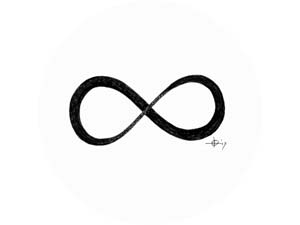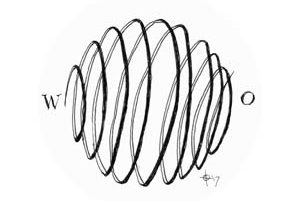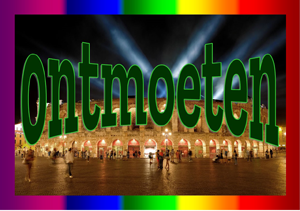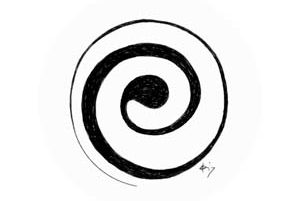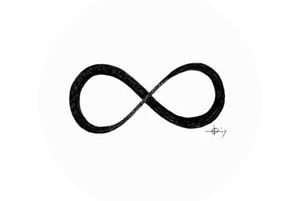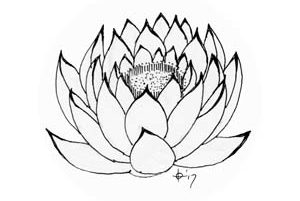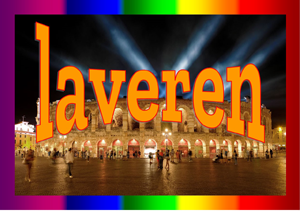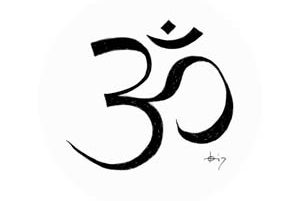Erik Hoogcarspel
Part 1 ― part 2
The gaze from within
Subjectivism
According to Kant every individual is the source of his own representation of the world. Therefore every individual is the source of its own right to exist, the apparent differences between people are merely illusions. We are all the same in essence. We are all the source of our own but shared world. Even Kant’s ethics is based on the absolute value of the rational individual. The world itself has become infinite, it is no longer limited by a higher reality. Already in the year 1600 Giordano Bruno was burnt at the stake, among others because of his claim that the universe is infinite, containing an infinite number of worlds. The model of the infinite sphere has been turned inside out: now the center is everywhere and the circumference is nowhere.
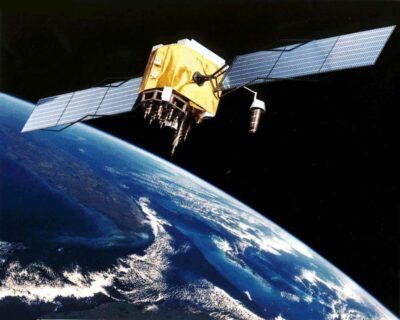
Inequality used to be natural and useful, but in the new model it becomes a threat to the existing order. From the 19th century onward life in Western societies involves emancipation, the fight against inequality. The exalted position of the nobility has to be eliminated and the ordinary crowd has to be uplifted. Protestantism and the philosophy of Rousseau gave the new directions for the future, the paradise of equality. Every human being has to be equal to God. What a person is, is no longer determined by his ― now coincidental ― place in society but by his individuality.
Every human being is unique and therefore we are all equal. Just like the points in a mathematical axial system we are only different from each other because of the meaningless coordinates of the place where we happen to be located. Recently these coordinates are even stored by the by means of the coordinates of the GPS system.
The nihilistic perspective
In his book “Human all too human” (chapter 1 § 16) Nietzsche argues against the existence of a reality in itself like the one Kant suggested. In his opinion such a reality is not only useless for the explanation of anything whatsoever, but on top of that it is by definition completely useless for anything whatsoever. It is not able to cause anything and it even cannot be known. Nietzsche claims that we are all caught within this “nihilistic” perspective. He argues by the way that word “nihilistic” is misplaced in this case, because those who believe in an absolute reality in itself are the ones who deny that life as we live it has any meaning by itself. In order to compensate for this they invent a higher reality, therefor they are the real nihilists.
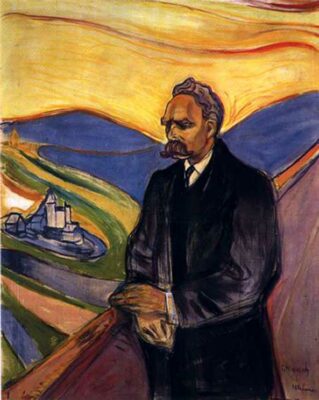
In his book “Twilight of idols” (Chapter 4) Nietzsche explains that the whole idea of a true reality is a grave mistake and therefore it is also a mistake to describe the world we experience as a world of nothing but appearances. So what Nietzsche is saying is that we should not pretend to be able to have a total overview of the world as such. The world is what appears to each of us and therefore it is no more than a network of perspectives. Nobody can escape from this network and describe it in its totality. Reality as such is perspectivistic.
Each perspective implies a certain involvement, therefore knowledge is not separate from our feelings and also not separate from life. Knowledge is part of our urge to expand ourselves. The pretense to have knowledge of the world in its totality is therefore also an expression of our urge to expand ourselves. It is very well understandable to claim to have a point of view from which we have absolute and superior objective knowledge, despite the fact that our perspectivism prevents all objective knowledge. It is for us a way to put all criticism aside, which would block our progress.
Objective knowledge however is in fact self-contradictory because it is knowledge of objects by subjects of which the existence is denied by this very knowledge.
Truth is somebody’s truth
In Nietzsche’s view every truth is a truth for somebody, a truth which arises because of a will, an involvement. Without this involvement we would not be able to understand ourselves and our own knowledge. This doesn’t mean however that our knowledge is changing every moment. We need a fixed and stable knowledge in order to maintain ourselves in this world full of threats, therefore we are constantly trying to expand and stabilize our knowledge of the world. This causes the constant development of science.
Because our knowledge is mixed with our involvement in the world, our aim is each moment to achieve everything what we possibly could want. This sounds rather vague, because we usually don’t know all that we could have wanted and it doesn’t seem to be very stable. Maybe tomorrow we will want something we could not think of today. It explains however why knowledge is constantly expanding.

But how do we know this, how can we be certain that our knowledge is not just fickle? How do we know that we learn something new? According to Nietzsche we know this by relying on our senses and our understanding. They don’t change very much and therefore we can compare the knowledge we used to have with knowledge we are gaining now and in this way we become aware that our knowledge has developed.
The problem of metaphysics is according to Nietzsche not only that it is mistaken, but also that is motivated by the will to self-denial. Metaphysics claims to have absolute objective certainty, but this way it denies that it is knowledge of a living being. This means that it denies life itself. Because of its fear for life metaphysics takes its refuge in that which is lifeless. In this way it makes itself week. Absolute knowledge is no part of the world. Differences in perspective are according to Nietzsche quite natural and even necessary for the expansion of knowledge. In the battle of perspectives the strongest one will always win. Eventually we will discover that every perspective is mixed with lies, especially when we read Nietzsche. That will be the time that metaphysics will be history and the world will be understood as the expression of the urge for expansion.

Nietzsche looks at the world from inside out. He wants everybody to have his own truth, which will subsequently grow and become better and even partly may become shared knowledge. This means that our individual truth will be a little bit watered down with “lies”, truths for everyone, because we don’t live in the world all by ourselves.
Nietzsche thought of himself to be a kind of prophet, this becomes most clear in his latest book “Ecce homo”. Despite the fact that this was largely motivated by his pathological narcissism, yet part of his predictions have come true. Nowadays, certainly in the media and on the Internet, personal opinions appear to be more important than a truth for all. This is not because those personal opinions have more credibility, but mainly because these opinions just generate more money and power.
Perspectivism
Nietzsche defends a kind of physical realism, just like science. According to him truth is what our senses tell us. Looking at the world this way, perspectivism becomes obvious. In science all propositions have to be universally true, but in daily life we all have our own perspective on things. Because we all look at things from a different angle, we all see different sides of things. In this world we are part of, each of us is his or her own center, so it is unnatural to exclude any point of view.
If someone would exclude the point of view of someone else, it would imply a hierarchy of perspectives, one being superior to the other. This offends our feeling of how the world is and should be. And that is why it is essential to us that everybody has the same rights and inequality causes often a lot of indignation. This makes us feel like we have the right to be everywhere on the world and consummate everything that other people are consuming. This stimulates tourism and trade, because everything needs to be made available everywhere. On the other hand it makes it very difficult to feel at home somewhere, because no one belongs anywhere any more, and it turns people into fugitives.
It doesn’t look like the ideal of equal rights for every human being in the whole world is easy to realize. Besides it is questionable whether this is what we should want, because not everybody has the same needs. It is undeniable that some people need more education than others. A professor needs more education for his job than a carpenter. The explosive growth of trade and tourism is also a huge burden for the ecosystem and high spots of tourism are becoming unlivable for the original inhabitants. To find a solution for this kind of problems is very hard if everybody sticks to his own personal opinion.
Shared rules and values
Kant put all his trust in logic and reason, but these suppose rules and values that are shared by everyone. These shared rules and values contradict the idea of a personal opinion, today we see this in the discussion about vaccination. Some people think they should not be forced to take the jab, even if there are very serious arguments in favor of doing it. If those people will be convinced by arguments to change their minds, it seems contrary to their entitlement to their own opinion. If they do change their minds, they are loathed by former allies and called defectors.
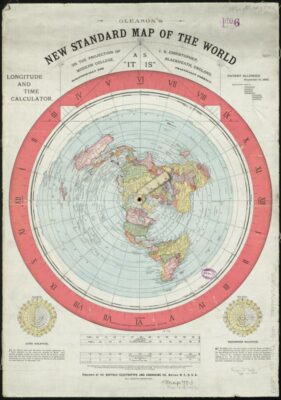
What used to be a case for arguments and of balancing of the pros and cons has become an emotional dilemma. This way emotions are involved everywhere and emotions cause inequality. It is for instance a problem if students in high school start to argue with their teacher because they have read somewhere on the Internet that the earth is flat or New York is capital of the United States. Certainly not, if their only defense is that they are entitled to their own opinion. It is a fact that most of the well-being and prosperity in the world is based on how much we are prepared to trust others and share power with them.
It seems therefore, if only on practical grounds, that it is impossible to grant everyone the full rights to own his or her very own truth. If this would be the case, every dialogue would become impossible because no one has anything to say to anyone else. Nietzsche wants the strongest opinion to win from all the others, because it is motivated by the strongest will. This boils down to supporting all kinds of terrorism, indoctrination and corruption.
Perhaps we should accept dialogue to become endless, without any winners or losers. Perhaps a real dialogue needs to have an open end, which is often the case in science, as Thomas Kuhn has showed us with his study of the history of science. Perhaps we should fight equality together with any inequality. If this is the case we may learn something from the philosophy of Nāgārjuna, because in emptiness no equality nor any inequality exists.
The gaze from emptiness
Phenomenology
Nietzsche’s perspectivism seems to be confirmed in daily life. And in most cases we can live very well with different opinions and tastes. Restaurants have menus with more than 40 dishes, many pubs serve 20 kinds of beer or more and in some coffee bars we can order a cup of coffee in 10 or more different variaties. If this is the case why wouldn’t we take perspective is as a point of depart instead of taking it as a hindrance on our way to a shared truth?
This is exactly the strategy of the kind of philosophy that is called “phenomenology”. It is founded by the philosopher Edmund Husserl (1859–1938). Husserl started with what is most obvious: our concrete impressions. Usually we even don’t notice them because we directly think about what these impressions mean. When we are reading we see spots on the screen or on of a piece of paper and immediately we recognize them as characters and in the combination of characters we immediately recognize words. Since primary school we stopped noticing this, but we can become aware of it if we pay close attention.
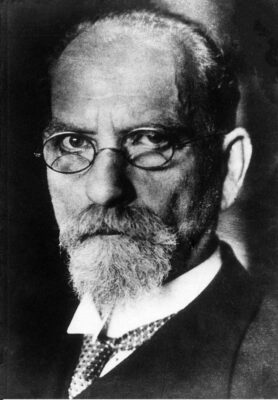
Husserl calls what directly arises in our consciousness phenomena, appearances, therefore the words are phenomena. We are used to think about phenomena, invent stories and reasonings about them and develop emotions towards them, but Husserl wants to leave all these aside for the moment. From their side the only thing phenomena do is appearing. They’re not on the screen or on the paper because there we only find black spots and stripes. They are not in our heads, because without screen or paper they would not have been there at all. In effect they don’t even exist, they are nowhere, they appear and before you know your thoughts wonder off and they are gone. Until you look at the screen or paper again.
Zurück zu den Sachen selbst
Metaphysical realism tells us that the spots on the screen or paper are circumstantial. The main thing are the words and they come from outside the material world. They express meanings which have been always there. Everyone who has learned to read is able to recognize the words, so they’re not in the mind of a specific person. Physical realism maintains that the meanings of the words we are reading are of secondary importance. Nietzsche claims that the most important thing is that someone uses words to convince us of something in order to serve his of her own interest. Materialists deny that anything happens at all when we read, our neurons react to visual stimuli, and that’s all to it.
Husserl wants to take the discussion into another direction, he suggests to leave all these considerations aside, because they are merely commentaries after-the-fact, which is the very appearance of phenomena. That is the reason why his motto was: “Zurück zu den Sachen selbst” (back to the things themselves). This act of leaving aside the called “epoché”, a Greek word that was formerly used by the old philosophical school of the Skeptics and it meant more or less to “stop in front of”. When we hold still in front of an appearing phenomenon we perform the so-called phenomenological reduction, considering the phenomenon as just a phenomenon.
Phenomena are illusions

Nāgārjuna shows in his kārika’s (mnemonic verses) that all kinds of phenomena, words, or things like a shoe or a cup of tea, don’t exist by themselves. They are empty, they merely exist in mutual dependence or correlativity. True, they seem to exist by themselves, but this is an illusion (chapter 7, verse 34).
We can all experience how an ice cream for instance, appears as if it exists by itself, because we can only long for something that really exists. Even looking at an ice cream in an advertisement causes an impression of true existence… until we see a good friend at the other side of the street and we are totally taken away from the image by the subsequent conversation. Phenomena by themselves are empty and this is confirmed by the phenomenologist Marc Richir who states that phenomena are “rien que phénomènes”, nothing but phenomena.
Perhaps many a reader will think at this moment something like “I have heard this many times before, but what is the use of it?”.
Buddhist meditation
Some phenomenologists think that holding still in front of phenomena and seeing them as phenomena has a lot in common with Buddhist meditation. When one meditates, one becomes aware of a thought or a sound and one stops the attention just there, which means that one doesn’t immediately think of what it means or where it comes from. The next step is being aware of it as something that merely appears, as a phenomenon, which gives the opportunity to let it go.
The main difference between meditation and practicing phenomenology is that the phenomenologist tries to describe the phenomena and their appearance and the meditator tries to go beyond the phenomena. Both experience that phenomena have no cause, they are appearing spontaneously, they are empty and are already in the process of disappearing while appearing. Marc Richir remarks that phenomena twinkle like stars at night far away in the sky. This is because they are recalled by our attention time and again during their continuous disappearing.
Quantum emptiness
Quantum mechanics, according to quantum physicist Carlo Rovelli for instance, affirm wholeheartedly that matter is empty, because also in their experiments it appears that the building blocks of matter are merely possibilities for existence.
Why is this not the same as what phenomenologists and Buddhists claim?
We have noticed that some of those quantum physicists support metaphysical realism. They acknowledge that the building blocks of matter are empty, but they believe that this is the expression of a higher reality. This emptiness can also be found in negative or apophantic theology. It is not the kind of emptiness which can be found anywhere in the world, in effect it is just God.

Others, like quantum physicist Robert Dijkgraaf, are convinced that quantum mechanics shows how the world we live in is made up. They are physical realists because they consider the quantum fields to be part of the material world. The emptiness they talk about is just the absence of matter.
In the 17th-century a heated debate took place about the question whether such an emptiness or vacuum was possible, whether God had allowed for holes in his creation. The difference with the metaphysical realists is that those quantum physicists think that they can discover all secrets of the world by means of instruments and experiments.
The emptiness of experience
Is there any difference between quantum mechanics and both phenomenology and Buddhism?
One difference is anyway that only the first one uses instruments for its observations and is therefore dependent on sense impressions.
The important and more essential difference is that for a quantum mechanic reality is out there and already completed. The only thing a scientist does is to measure and to observe something which is already there waiting to be observed. If there is emptiness, it is objective, to be measured and calculated. It exists on its own and it also exists when nobody thinks of it.
The emptiness of the quantum fields is not spontaneous, not contingent and not wild. It doesn’t grow its own meaning.
On the other hand, anyone who observes his own thoughts during meditation, will notice that thoughts have an element of unpredictability, a kind of wildness that cannot be suppressed. A thought forms its own meaning spontaneously, in dependence with other thoughts. This process requires emptiness and it is unpredictable, nobody knows beforehand what he or she is going to think next moment.
The distortion
Metaphysical realism believes in an ultimate truth apart from the world and physical realism believes in an ultimate truth within the world.
According to phenomenology and Buddhism truth is a process that always still has to take place and will never be finished. The main reason for this is that truth is not considered to be something that exists without us, it is something that involves our very existence. Truth is an open process, it is not to be found in a book and it is not to be discovered anywhere in the world.
Truth has an element of wildness. This element is actually part of our very everyday life. Of course we have made things quite predictable, especially in the West where trains usually ride more or less on time.
Nevertheless a hallmark of reality remains that there is always something which happens unexpectedly, something that is not made up by anyone, which doesn’t really fit in with what we already know. Because of this, reality is radically different from a movie, a novel or a theater play. Those are compositions with a more or less dominating structure of a plot or a line of thought. The plot of the world we live in is us, it is alive and changes continuously.
 The phenomenologist Marc Richir calls this the “original distortion of the phenomena”. The easiest way to explain this is by the example of seeing. A photograph shows an image of a part of the world that has been taken from one single lens. This is not the image our eyes are presenting us. Most of us have two eyes in the first place and besides, our eyes are moving all the time, looking from left to right and from near to far. We also move our body while looking.
The phenomenologist Marc Richir calls this the “original distortion of the phenomena”. The easiest way to explain this is by the example of seeing. A photograph shows an image of a part of the world that has been taken from one single lens. This is not the image our eyes are presenting us. Most of us have two eyes in the first place and besides, our eyes are moving all the time, looking from left to right and from near to far. We also move our body while looking.
We notice the difference when we put on a pair of 3D-glasses: suddenly there is depth, which is missing from a normal photograph. Depth is nothing but the fact of our presence in the visible space. Depth means that our reach is limited, flexible and changeable and that we cannot see everything at the same time. We are invited to move around and investigate. In other words depth is dynamic emptiness.
Artists have noticed this long time ago, they try in different ways to enrich their paintings with movement and invite our eyes to wander around in the painting. A method which is frequently used, is to show objects or landscapes from several perspectives at the same time. Such a painting diverts from the laws of the geometry of perspective, but it looks more real.
This method of a wandering perspective is not only used by Cubists and impressionists but also by traditional Chinese landscape painters. What is different is not the landscape itself, but the way it appears. It shows itself by way of not being exactly like itself, it is empty of itself. This is just another way to express the fact that the viewer depends of the view and the viewed and the other way around, that all three are correlative.
I would like to take this one step further. Jean-Paul Sartre argued in his book “La transcendance de l’ego” (The transcendence of the ego) that consciousness is anonymous, that our sense of self depends entirely on our physical presence in the world. If he is right, it would mean that we are nothing but an original distortion of the phenomena.
It is like in a landscape painting the one who sees the painting is shown by the perspectives, nevertheless he or she is nowhere in the landscape itself, but hidden within its structure.
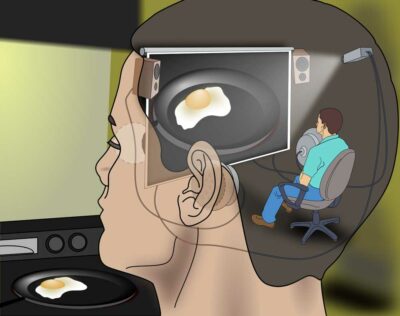
In a 3D-environment we identify with the place and position the software suggests to us, responding to the movements we make. A metaphysical self, a soul, would not be needed. We would all be black holes in the universe of things, centers of gravity produced from gravity by gravity. This would also illustrate the fact that we all feel a natural attraction towards each other and to things when they enter into our neighborhood.
Merleau-Ponty would immediately correct this model, by pointing out that the invisible does not exist separated from the visible, both are the two aspects of the flesh of the world. He is right of course, because the model still has the structure of the gaze of oversight, the eye of God, it ignores the mutual interdependence.
Quantum and emptiness
The quantum physicist looks at the screen and sees rows with all kinds of numbers passing by, and he or she does complicated calculations. Finally he or she concludes that there might be an emptiness behind all these fleeting numbers. Completely absorbed in those numbers and calculations there is the feeling to be close to a great discovery.
What she doesn’t see however is that the numbers themselves, the computers, the instruments and his or her own thoughts are empty of self existence. This is the very emptiness that is the necessary condition for the other emptiness the conventional emptiness revealed by the numbers and models. It is a different emptiness, an all encompassing emptiness of a different kind that is not to be found beside or behind or even beyond the numbers and the instruments.
It is an emptiness that brings a deep peace of mind, an emptiness that is sought after day by day by millions of Buddhists since its discovery 2500 years ago.
- Arthur O. Lovejoy (1936): The Great Chain of Being, Harvard U.P.
- Erik Hoogcarspel (2005): The Central Philosophy, Basic Verses, Olive Press, Amsterdam
- https://www.nrc.nl/nieuws/2021/03/04/hoe-kwantumfysica-ons-wereldbeeld-op-zijn-kop-zet-a4034181
- Immanuel Kant (1995): Träme eines Geistersehes und andere vorkritische Schriften, Könemann Verl., Köln, p. 364
- Marc Richir (1976): Au delà du Reversion Copernicien, Martinus Nijhoff, Den Haag
- Michel Dijkstra (2012) Oosterse filosofie, 113. Stgn Instituut voor Filosofie, Amsterdam
- Sanne Bloemink (2021): Waarom de grootste revolutie in de wetenschap onzichtbaar is. Kwantum-groupie, in De Groene Amsterdammer 2021 nr. 31, August 4th 2021, https://www.groene.nl/artikel/kwantum-groupie
- Thomas A. Kochumuttom: (1989): A buddhist doctrine of experience, Motilal Banarsidas, Delhi
- Ulrich Libbrecht (2013), Burger van de wereld, Damon
Notes
[1] Source: Artist’s conception of GPS Block II-F satellite in Earth orbit
[2] Source: Nietzsche by Munch
[3] Source: A mappa mundi attributed to Simon Marmion in a manuscript of La Fleur des Histoires by Jean Mansel (1459-1463)
[4] Source: Ecce Homo engraving by Israhel van Meckenem
[5] Source: Gleason’s new standard map of the world on the projection of J. S. Christopher, Modern College, Blackheath, England; scientifically and practically correct; as “it is.”
[6] Source: Edmund Husserl (1910)
[7] Source: Soft ice cream
[8] Source: A vacuum chamber being opened by an engineer
[9] Source: Homunculus

